
Giovanni Antonio Canal, commonly known as Canaletto, was an Italian painter from the Republic of Venice, considered an important member of the 18th-century Venetian school.
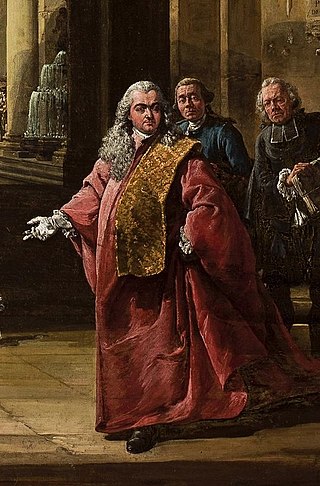
Bernardo Bellotto, was an Italian urban landscape painter or vedutista, and printmaker in etching famous for his vedute of European cities – Dresden, Vienna, Turin, and Warsaw. He was the student and nephew of the renowned Giovanni Antonio Canal Canaletto and sometimes used the latter's illustrious name, signing himself as Bernardo Canaletto. In Germany and Poland, Bellotto called himself by his uncle's name, Canaletto. This caused some confusion, however Bellotto’s work is more sombre in color than Canaletto's and his depiction of clouds and shadows brings him closer to Dutch painting.

The Chiesa del Santissimo Redentore, commonly known as Il Redentore, is a 16th-century Roman Catholic church located on Giudecca (island) in the sestiere of Dorsoduro, in the city of Venice, Italy.

Francesco Lazzaro Guardi was an Italian painter, nobleman, and a member of the Venetian School. He is considered to be among the last practitioners, along with his brothers, of the classic Venetian school of painting.
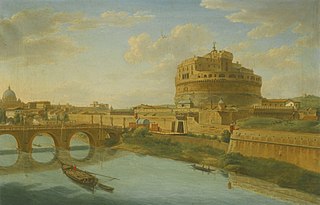
A veduta is a highly detailed, usually large-scale painting or, more often, print of a cityscape or some other vista. The painters of vedute are referred to as vedutisti.

Antonio Visentini was an Italian architectural designer, painter and engraver, known for his architectural fantasies and capricci, the author of treatises on perspective and a professor at the Venetian Academy.
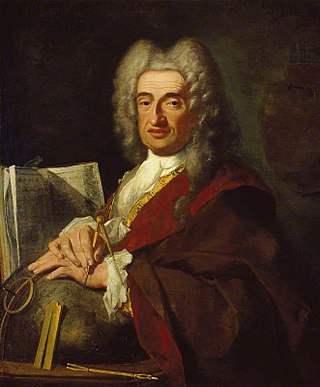
Luca Carlevarijs or Carlevaris was an Italian painter and engraver working mainly in Venice. He pioneered the genre of the cityscapes (vedute) of Venice, a genre that was later widely followed by artists such as Canaletto and Francesco Guardi.

Michele Marieschi or Michele Giovanni Marieschi, also Michiel, also known as Michiel, was an Italian painter and engraver. He is mainly known for his landscapes and cityscapes (vedute), or views, mostly of Venice. He also created architectural paintings, which reveal his interest in stage design.

Pietro Bellotti (1625–1700) was an Italian painter active in the Baroque period.
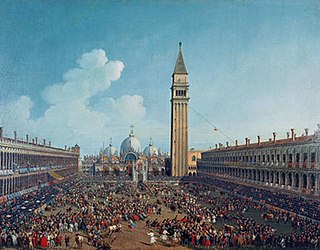
Giovanni Battista Cimaroli (1687–1771) was an Italian painter of rustic landscapes with farms, villas and graceful figures and capricci of ruins and views of towns in the Veneto.

Giuseppe Borsato was an Italian painter, primarily of vedute. Known for his work as the architect, decorator, and painter to the French Imperial Court in Venice.

Joseph Smith, often known as Consul Smith, was the British consul at Venice from 1744 to 1760. He was a patron of artists, most notably Canaletto, a collector and connoisseur, banker to the British community at Venice, and a major draw on the British Grand Tour. His collection of drawings was bought for George III of Great Britain and forms a nucleus of the Royal Collection of drawings in the Print Room at Windsor Castle.
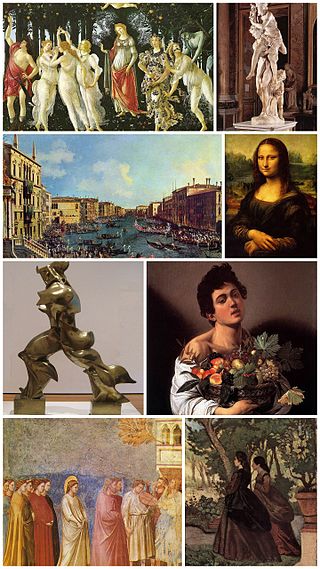
Italian Rococo art refers to painting and the plastic arts in Italy during the Rococo period, which went from about the early/mid-18th to the late 18th century.

The Stonemason's Yard is an early oil painting by Giovanni Antonio Canal, better known as Canaletto. It depicts an informal scene in Venice, looking over a temporary stonemason's yard in the Campo San Vidal set up for the construction of Andrea Tirali's facade of the church of San Vidal, and across the Grand Canal towards the church of Santa Maria della Carità. Painted in the mid to late 1720s, it is now in the collection of the National Gallery in London and is considered one of Canaletto's finest works.

The Grand Canal at the Church of the Salute is an oil on canvas painting by Canaletto. It is a Rococo landscape painting, completed circa 1740. It measures 151 by 121 centimeters and is now in the Emil Georg Bührle collection, Zurich, Switzerland.

The Grand Canal in Venice from Palazzo Flangini to Campo San Marcuola is a painting by Canaletto in the J. Paul Getty Museum in Los Angeles, California. Painted around 1738, it may have been commissioned by the English merchant and art collector Joseph Smith (1682–1770).

The Entrance to the Grand Canal, Venice, is an c. 1730 oil painting on canvas by the Venetian painter Canaletto. It is a Rococo landscape painting measuring 49.6 by 73.6 centimeters currently held as part of the Robert Lee Blaffer Memorial Collection in the Audrey Jones Beck Building at the Museum of Fine Arts, Houston, in Houston, Texas. It was a gift from Sarah Campbell Blaffer.

The Pra della Valle in Padua is a 1741-1746 oil on canvas painting of the Prato della Valle in Padua by Canaletto. It entered the collection of the Milanese nobleman Gian Giacomo Poldi Pezzoli and from there it passed its present owner, the Museo Poldi Pezzoli in Milan.

The Grand Canal Facing Santa Croce is an oil on canvas painting attributed to Bernardo Bellotto, now in the National Gallery in London. It is named after the Church of Santa Croce in the right-hand foreground. Several boats are shown on the Grand Canal, including a burchiello, effectively the link between Venice and Padua.
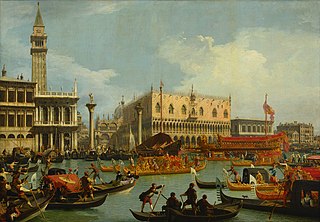
The Bucentaur Returns to the Pier at the Doge's Palace or The Doge of Venice Departs for the Festival of the Betrothal of Venice to the Adriatic Sea is a c.1730 oil on canvas painting by Canaletto. It was acquired together with his Reception of the French Ambassador in Venice in the 1760s for the Hermitage Museum. In 1930 The Bucentaur was transferred to the Pushkin Museum in Moscow, where it remains. Variants of the work survive in several collections, including the Royal Collection at Windsor Castle, the Dulwich Picture Gallery and the Uffizi, whilst a copy by Fyodor Alekseyev is in the Russian Museum.




















